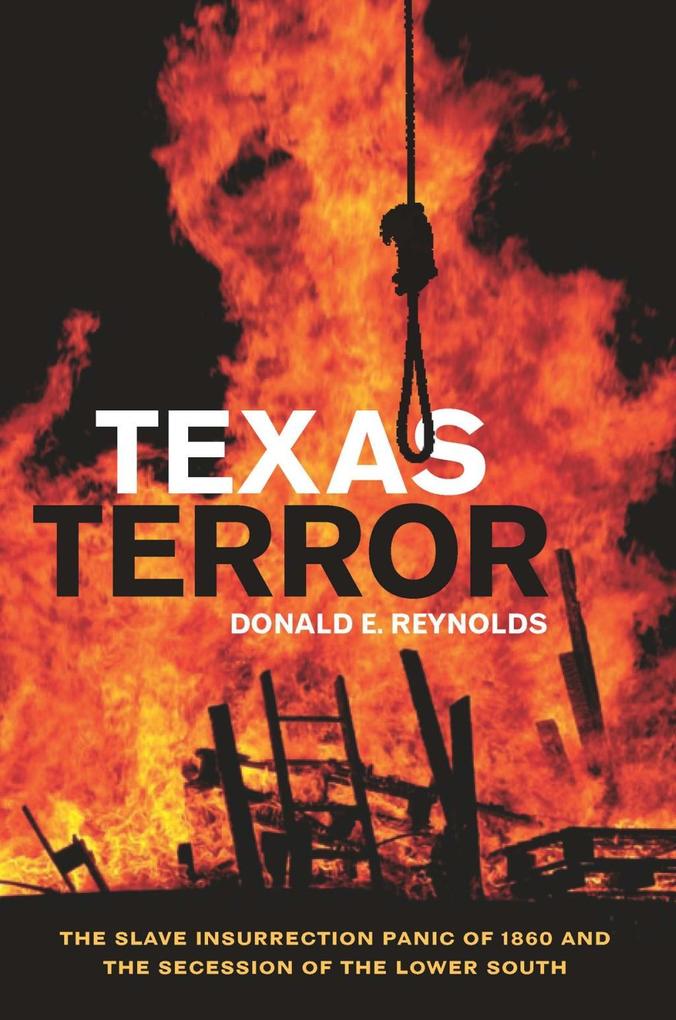
Sofort lieferbar (Download)
On July 8, 1860, fire destroyed the entire business section of Dallas, Texas. At about the same time, two other fires damaged towns near Dallas. Early reports indicated that spontaneous combustion was the cause of the blazes, but four days later, Charles Pryor, editor of the Dallas Herald, wrote letters to editors of pro-Democratic newspapers, alleging that the fires were the result of a vast abolitionist conspiracy, the purpose of which was to devastate northern Texas and free the region's slaves. White preachers from the North, he asserted, had recruited local slaves to set the fires, murder the white men of their region, and rape their wives and daughters. These sensational allegations set off an unprecedented panic that extended throughout the Lone Star State and beyond. In Texas Terror, Donald E. Reynolds offers a deft analysis of these events and illuminates the ways in which this fictionalized conspiracy determined the course of southern secession immediately before the Civil War. As Reynolds explains, all three fires probably resulted from a combination of extreme heat and the presence of new, and highly volatile, phosphorous matches in local stores. But from July until mid-September, vigilantes from the Red River to the Gulf of Mexico charged numerous whites and blacks with involvement in the alleged conspiracy and summarily hanged many of them. Southern newspapers reprinted lurid stories of the alleged abolitionist plot in Texas, and a spate of similar panics occurred in other states. States-rights Democrats asserted that the Republican Party had given tacit approval, if not active support, to the abolitionist scheme, and they repeatedly cited the "Texas Troubles" as an example of what would happen throughout the South if Lincoln were elected president. After Lincoln's election, secessionists charged that all who opposed immediate secession were inviting abolitionists to commit unspeakable depredations. Secessionists used this argument, as Reynolds clearly shows, with great effectiveness, particularly where there was significant opposition to immediate secession. Mining a rich vein of primary sources, Reynolds demonstrates that secessionists throughout the Lower South created public panic for a purpose: preparing a traditionally nationalistic region for withdrawal from the Union. Their exploitation of the "Texas Troubles," Reynolds asserts, was a critical and possibly decisive factor in the Lower South's decision to leave the Union of their fathers and form the Confederacy.
Mehr aus dieser Reihe
Produktdetails
Erscheinungsdatum
01. Dezember 2007
Sprache
englisch
Seitenanzahl
264
Dateigröße
2,33 MB
Reihe
Conflicting Worlds: New Dimensions of the American Civil War
Autor/Autorin
Donald E. Reynolds
Verlag/Hersteller
Kopierschutz
mit Adobe-DRM-Kopierschutz
Produktart
EBOOK
Dateiformat
EPUB
ISBN
9780807154878
Entdecken Sie mehr
Bewertungen
0 Bewertungen
Es wurden noch keine Bewertungen abgegeben. Schreiben Sie die erste Bewertung zu "Texas Terror" und helfen Sie damit anderen bei der Kaufentscheidung.


































